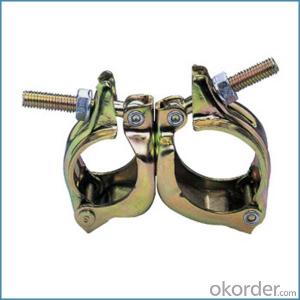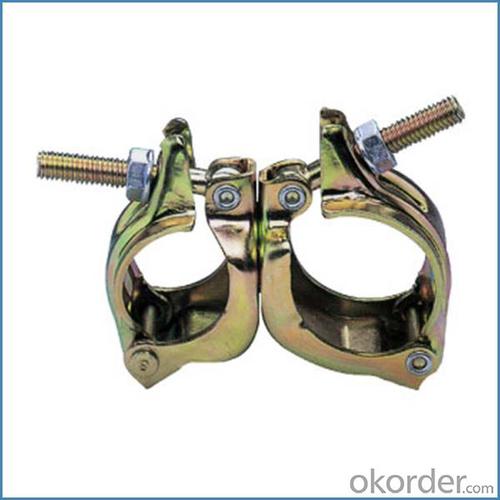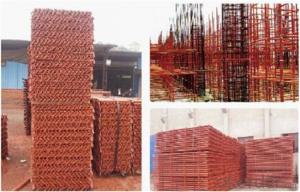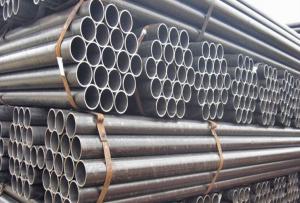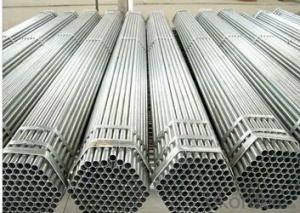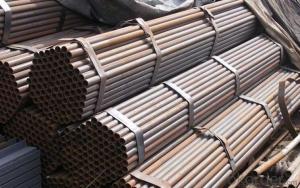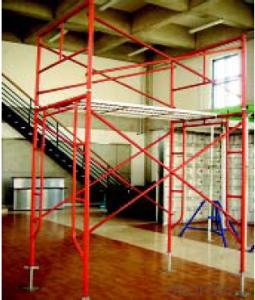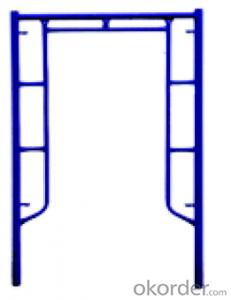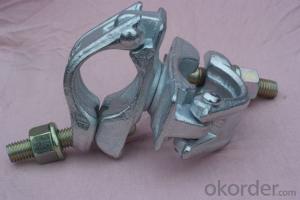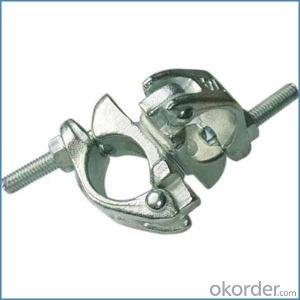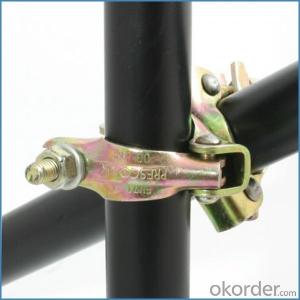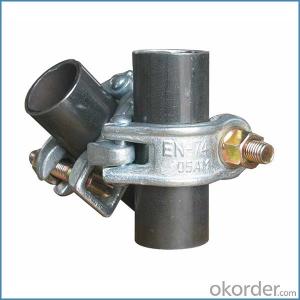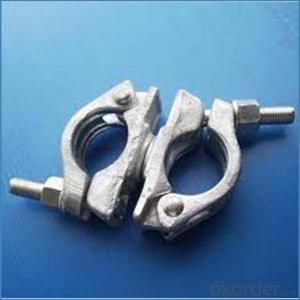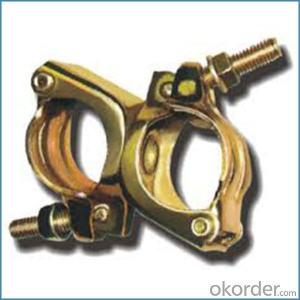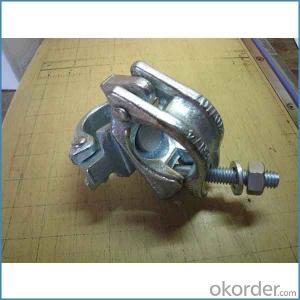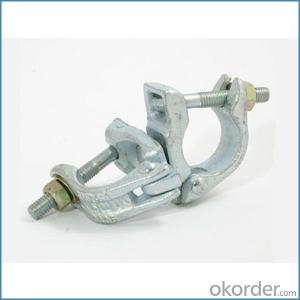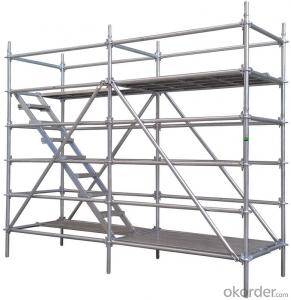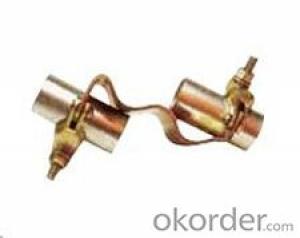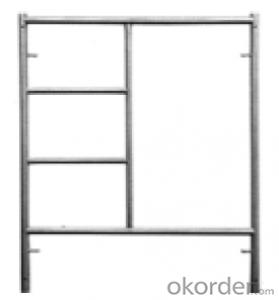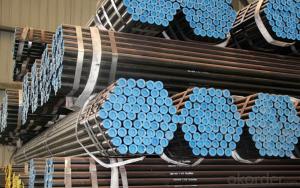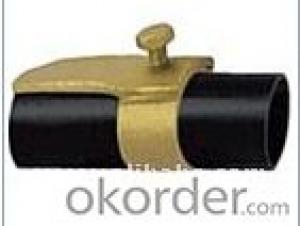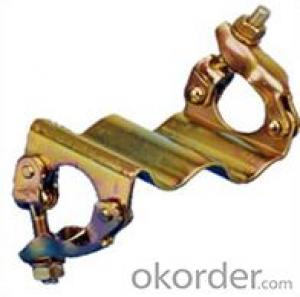Scaffold Coupler Nut And Bolt British Type for Sale
- Loading Port:
- Tianjin
- Payment Terms:
- TT OR LC
- Min Order Qty:
- 1000 kg
- Supply Capability:
- 100000 kg/month
OKorder Service Pledge
OKorder Financial Service
You Might Also Like
Scaffold Coupler Nut And Bolt British Type for Sale
Description
1.The scaffolding coupler is always used to connect the steel pipe as scaffolding system.
2.The often used coupler is swivel coupler and righ angle coupler .
3.We can provide types of scaffolding coupler according to your requirement.
4.Couoler can fix the 48.3mm scaffolding steel pipe tightly and make the whole scaffolding system more steadily.
5.Material:Q235 steel
6.Overall Size:48.3mm*48.3mm
7.Surface Finish: Galvanized/ Painted
8.Standard:BS1139,EN74
9.Package:25pcs/bag
10.Manufactuering as per customer requirements
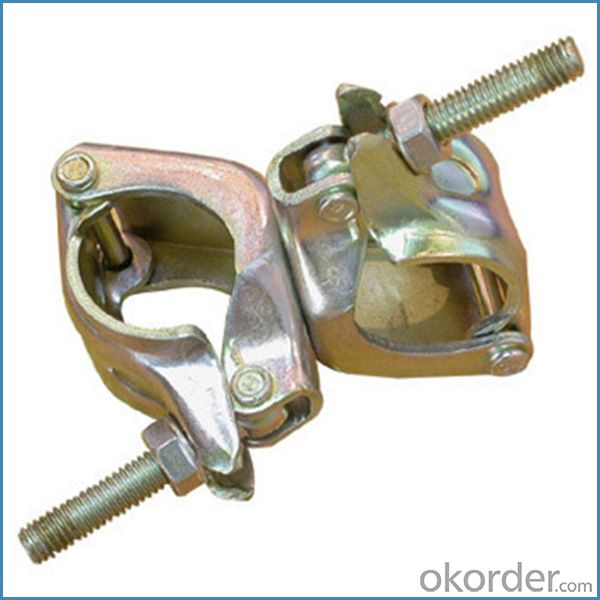
Feature
(1)Excellent Anti-Breaking—Cold Pressed Steel
(2)Outstanding Resistance Deformation
(3)Strong Anti-Dropping Ability
(4)Longtime USe
(5)Qualtity Guaranteed
(6)OEM Service
Photo
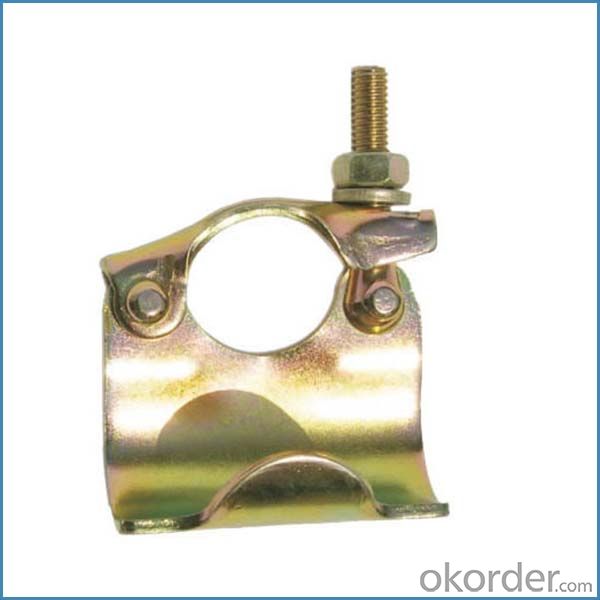
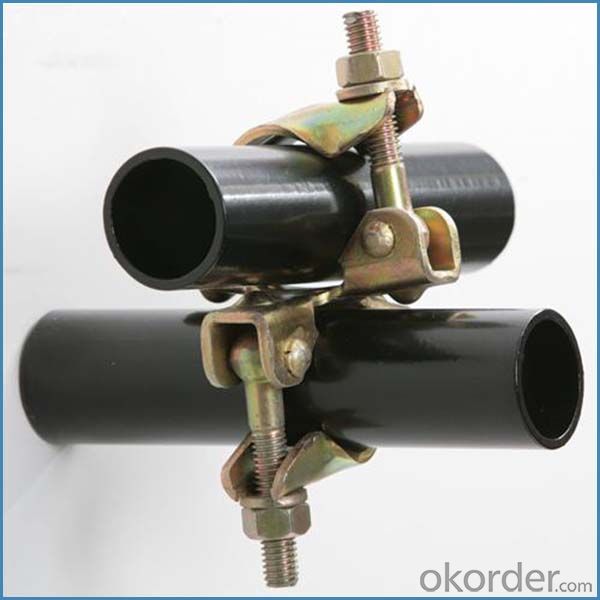
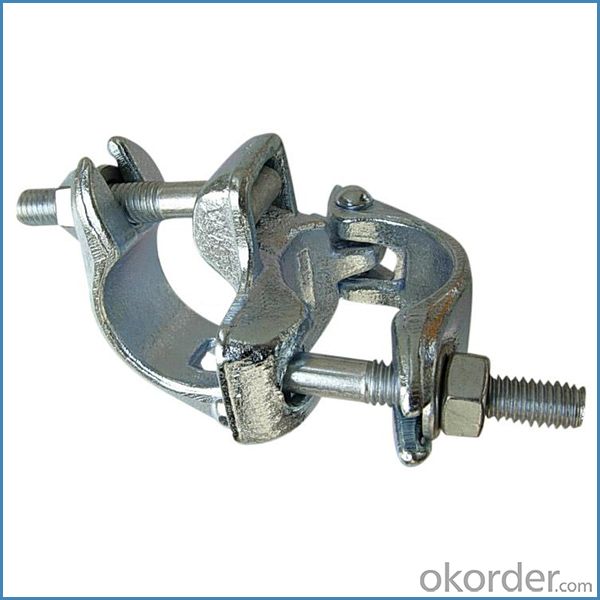
Parameter
| Material | Q235,345steel |
| Size | 48.3mm*48.3mm |
| Surface finish | Galvanized |
| Weight | 1.1kg around |
| Standard | BS1139,EN74 |
| Package | 25pcs/bag,steel pallet |
| Manufacture | As per customer requirement |
| Market | Africa, South America, the Middle East and Asia |
FAQ
Q: Are you a factory or trading company?
We are a state-owned corporation in China,dealing with various kinds of building materials.We have our holding subsidiaries.
Q: Where is your factory located? How can I visit there?
Our factory is located all around China.
Q: Can I get some samples?
Sample is free, customer only pay freight for the first time.
Q: Delivery?
10-30days. (5-15 containers)
Any question,feel free to contact us.
- Q: Are steel tube couplers compatible with different types of scaffolding ladders or access systems?
- Yes, steel tube couplers are compatible with different types of scaffolding ladders or access systems. They are designed to provide a secure and reliable connection between the scaffolding tubes, allowing for versatility and compatibility with various types of scaffolding structures.
- Q: i really wanna go get it tomorrow, can you guys tell me about it? i have a couple question. I know pain is different for everyone, but how bad does it hurt on average? how do they pierce it? i watched a video online and it looks like they shove one thing through to make one hole, another thing through to make another hole, then attach the bar to end of the thing and slide it through, and then do the same thing to the other one. is that how it works? what happens if your ears grow? hahah i know thats an odd question, but hey its a concern haha i think thats all i wanted to know, if you could help out and answer that would be great!!
- My scaffold, also known as an industrial, was one of my more painful, but it's not unbearable. It hurts mostly because it's two piercings done at once, which sort of just sets the upper part of your ear on fire at first, but it dulls down and is just sore after a while. Heal time is about 6 months, and you're sore for maybe the first month. They pierce it with a hollow needle one hole at a time, starting with the cartilage (or at least that's how mine was done.) And just follow through from there to the lower piercing. They slide the bar through using the hollow needle and attach the ends, etc. Ears, in your teens, generally aren't gonna get any bigger, so you'll be fine. And swelling in minimal - cartilage doesn't swell. Just take good care of both holes and keep your jewelry in. Your piercer will be able to answer everything beforehand - that's what he/she is there for. Just ask to make sure, never be afraid to ask.
- Q: Are steel tube couplers compatible with scaffolding edge protection systems for inclined surfaces?
- Scaffolding edge protection systems for inclined surfaces can generally be paired with steel tube couplers. Steel tube couplers are commonly utilized in scaffolding construction to connect and secure the tubes together, providing a reliable and robust connection that is vital for the stability and safety of the scaffolding structure. Inclined surfaces, such as ramps or sloped roofs, necessitate appropriate edge protection systems to prevent falls and accidents. These systems typically include guardrails, toe boards, and other safety components that create a protective barrier along the edge of the scaffolding. Integrating steel tube couplers with the edge protection systems is a simple process. By attaching the guardrails and other safety components directly to the scaffolding tubes using the couplers, a secure and sturdy connection is achieved, ensuring the edge protection system remains in place and offers effective fall protection. It is important to note that the compatibility between steel tube couplers and scaffolding edge protection systems may vary depending on the design and specifications of the couplers and the edge protection system being used. Therefore, before using them together on inclined surfaces, it is crucial to ensure that the couplers and edge protection system are compatible and meet the necessary safety standards and regulations.
- Q: Can steel tube couplers be used for scaffolding projects that require frequent load testing?
- Indeed, in scaffolding projects necessitating regular load testing, steel tube couplers can be utilized. In the construction and scaffolding sectors, steel tube couplers are commonly employed to join steel tubes, establishing a firm and secure connection. They are engineered to endure substantial loads and provide stability to scaffolding systems. Regarding load testing, steel tube couplers undergo testing and certification to ascertain their load-bearing capacity. This guarantees their ability to support the intended loads during scaffolding projects. Certain couplers are specifically designed for heavy-duty applications, capable of withstanding even higher loads. In scaffolding projects that entail frequent load testing, it is imperative to ensure that the steel tube couplers deployed possess proper ratings and certifications for the anticipated loads. Regular inspections and load tests must be conducted to ensure the safety and soundness of the scaffolding system. This entails applying loads to the scaffolding to verify its strength and stability, as well as examining the condition of the couplers and other components. Overall, steel tube couplers are suitable for scaffolding projects necessitating frequent load testing, provided they possess proper certifications and undergo thorough inspections. It is crucial to adhere to the manufacturer's guidelines and industry standards to ensure the safe and efficient utilization of steel tube couplers in such projects.
- Q: we are thinking about getting our block of flats painted. it's a 6 storey regency building, so it's high but only about 15ft wide and we only want to get the front painted. anyone got any idea how much scaffolding would cost? the area is brighton, east sussex. thanks for any answers.
- I had a detached 4-bed house surrounded (soffit and barge boards to do) by scaffold to a high standard for ?180 in Kent. Two weeks hire, assembly and dismantle included (they left it there for 3 weeks in fact). Pay more than 200 outside and you're being ripped-off...
- Q: Building construction bowl button steel pipe scaffolding and fastener scaffolding which cost high
- Polystyrene foam board is the cheapest, extruded board is good but expensive
- Q: How do steel tube couplers ensure a secure connection between tubes?
- Steel tube couplers ensure a secure connection between tubes by providing a strong and reliable joint. They are designed to grip tightly onto the tubes and hold them together firmly. The couplers have internal teeth or ridges that bite into the surface of the tubes, creating a strong bond. Additionally, these couplers are often tightened using bolts or screws, further enhancing the connection and preventing any movement or slippage between the tubes.
- Q: How do steel tube couplers ensure the stability of scaffolding during adverse weather conditions?
- Steel tube couplers ensure the stability of scaffolding during adverse weather conditions by providing a strong and secure connection between the tubes. These couplers are designed to withstand high winds, heavy rain, and other extreme weather conditions, ensuring that the scaffolding remains stable and safe for workers. The tight grip of the couplers prevents any movement or slippage of the tubes, maintaining the structural integrity of the scaffolding even in challenging weather situations.
- Q: Height is greater than the number of M buildings, outside the scaffolding should generally use rigid wall structure
- According to the installation of the wall and the size of the load, commonly used open double row scaffolding pole
- Q: How do steel tube couplers contribute to the overall structural integrity of a scaffolding system?
- Steel tube couplers play a crucial role in enhancing the overall structural integrity of a scaffolding system. These couplers are used to connect and secure steel tubes together, forming a stable and robust framework that can support heavy loads and provide a safe working platform for construction workers. One of the main contributions of steel tube couplers is their ability to create strong and reliable connections between the tubes. These couplers are designed to grip the tubes tightly, ensuring a secure and rigid joint. This is essential in preventing any movement or displacement of the tubes, which could compromise the stability of the scaffolding system. By firmly holding the tubes together, the couplers enhance the overall structural stability and integrity of the scaffolding. Additionally, steel tube couplers also allow for flexibility and adjustability in the scaffolding system. They enable the construction workers to easily assemble and disassemble the scaffolding as needed, making it highly adaptable to different project requirements. This flexibility not only enhances the efficiency of construction but also ensures that the scaffolding can be easily modified to accommodate changes in the work environment. Moreover, steel tube couplers are known for their durability and strength. These couplers are typically made of high-quality steel, which provides excellent resistance to corrosion, impact, and other external forces. This ensures that the scaffolding system remains structurally sound and reliable even in challenging and harsh working conditions. Overall, steel tube couplers play a vital role in contributing to the overall structural integrity of a scaffolding system. Their ability to create secure connections, provide flexibility, and withstand external forces make them an essential component in ensuring the stability and safety of scaffolding structures.
Send your message to us
Scaffold Coupler Nut And Bolt British Type for Sale
- Loading Port:
- Tianjin
- Payment Terms:
- TT OR LC
- Min Order Qty:
- 1000 kg
- Supply Capability:
- 100000 kg/month
OKorder Service Pledge
OKorder Financial Service
Similar products
Hot products
Hot Searches
